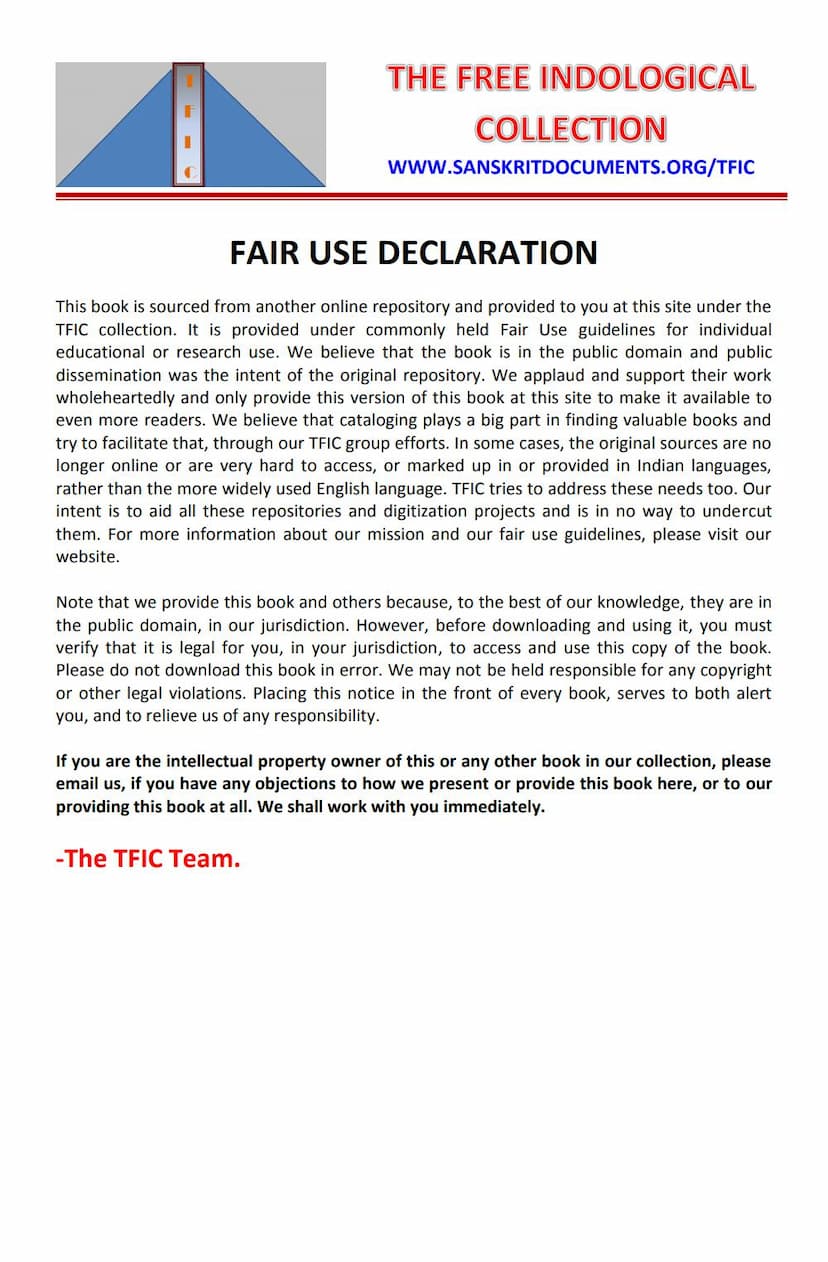Crime And Karma Cats And Woman
Added to library: September 1, 2025

Summary
The book "Fragments of a Prisoner's Diary, Volume One: Crime and Karma, Cats and Women" by M. N. Roy is a collection of essays and observations written during his imprisonment. Roy expresses a strong dislike for autobiography, viewing them as egoistic and unreliable historical records, and instead presents these writings as random notes and reflections born out of his solitary confinement.
The book is structured into several chapters:
-
Preface: Roy explains the origin of these writings, sparked by observing a stray kitten in jail. He initially intended to document the cat's life but broadened his reflections to encompass various subjects that arose from these observations. He emphasizes that his writings are not a scientific treatise but rather thought-provoking fragments intended to provoke thought.
-
The Memoirs of a Cat: This chapter is presented from the perspective of a cat, which reflects on human nature, societal norms, and philosophical ideas. The cat, adopting a cynical and critical tone, questions human vanity, the basis of their perceived superiority, and the often hypocritical aspects of human behavior. It delves into biological facts to argue for the fundamental similarity between humans and animals, suggesting that human intellectual and emotional qualities are not inherently superior but rather a product of evolution and language. The cat critiques religious and social practices, such as cow worship, vegetarianism, and the tyranny of words, arguing that they often mask self-interest and ignorance. It also explores the limitations of human language and thought, suggesting that animals, unburdened by these constraints, might possess a different kind of wisdom.
-
The Ideal of Indian Womanhood: This section critically examines the traditional and evolving role of women in Indian society. Roy highlights the paradoxes and injustices faced by Indian women, contrasting the idealized notions of womanhood with the harsh realities of their lives. He discusses the impact of poverty and cultural backwardness on birth rates and family planning, criticizing the societal conditions that lead to high mortality and lack of responsibility. The chapter scrutinizes the practice of birth control, the Mahatma's views on it, and the prevailing patriarchal structures that limit women's autonomy. Roy argues that the ideal of Indian womanhood is often a myth used to maintain social hierarchies, and that women are increasingly demanding equality and freedom, challenging traditional norms. He critiques the concept of "familyism" over individualism, arguing that it perpetuates the subjugation of women.
-
Crime and Karma: This chapter explores the concept of crime and karma, particularly within the context of the Indian prison system. Roy argues that crime is often a social phenomenon, a symptom of societal injustice and adverse circumstances rather than individual moral failing. He criticizes the doctrine of karma and fatalism, suggesting they are used to reconcile the masses to their miserable conditions and to absolve oppressors of responsibility. He observes that prisoners often believe their incarceration is a result of fate or divine will, rather than a consequence of systemic failures. Roy shares observations about how prisoners treated animals differently, noting that "hardened criminals" often showed more kindness than the religiously devout. He also examines the psychology of juvenile thieves, highlighting their defiant attitude towards fate and their preference for prison due to the guarantee of basic necessities.
-
Why Men are Hanged: This chapter presents case studies of prisoners, analyzed through a socio-historical lens. Roy demonstrates how crimes are often committed under duress and as a result of societal pressures and traditional taboos, rather than inherent human depravity. He discusses cases of incest, infanticide, and murder, arguing that the legal and social systems often fail to address the root causes of these crimes, instead punishing the victims of circumstances. He criticizes the legal system for its inability to consider social extenuating circumstances and highlights the disparity in treatment between the rich and the poor when it comes to legal justice. Roy also touches upon the role of religion and superstition in shaping criminal behavior and societal responses.
-
The Cult of Asceticism and Renunciation: Roy critiques asceticism and renunciation, viewing them not as spiritual virtues but as social diseases born out of despair and societal crisis. He draws parallels between Christian monasticism and similar practices in India, arguing that they often served as an escape for the destitute and oppressed from hopeless living conditions. He suggests that these movements were not driven by genuine spirituality but by a desire for material comfort, prestige, and power, masked by religious pretension. Roy contends that such ideals, far from being signs of cultural superiority, indicate a societal stagnation and a failure to confront and solve life's problems through rational means.
-
The Philosophical Revolution: This concluding chapter advocates for a philosophical revolution based on scientific knowledge and the application of the scientific method to everyday life. Roy emphasizes that science has provided humanity with a new worldview, challenging traditional religious and metaphysical beliefs. He critiques India's tendency to cling to past glories and spiritual ideals while neglecting practical realities and scientific progress. He champions Materialism as the necessary philosophy for the age of science, advocating for a shift from unquestioning belief and authority to critical inquiry and empirical evidence. He argues that embracing a scientific outlook is essential for India's national renaissance and for overcoming its present state of ignorance, superstition, and degradation.
In essence, M. N. Roy's "Fragments of a Prisoner's Diary" is a profound and critical examination of Indian society, culture, religion, and the human condition, presented through a unique and often provocative lens. The book challenges conventional wisdom and calls for a radical re-evaluation of traditional values in light of scientific understanding and social reality.